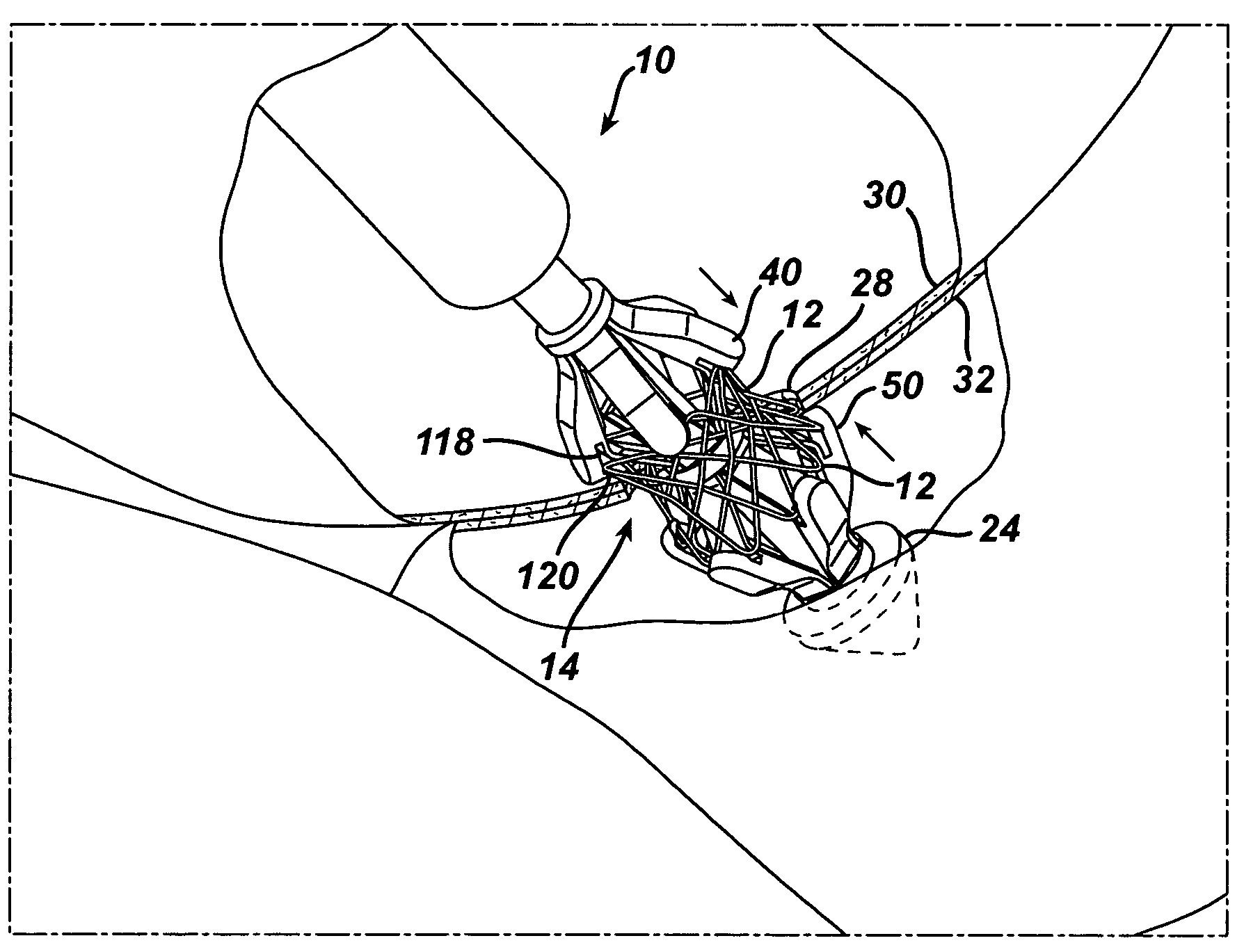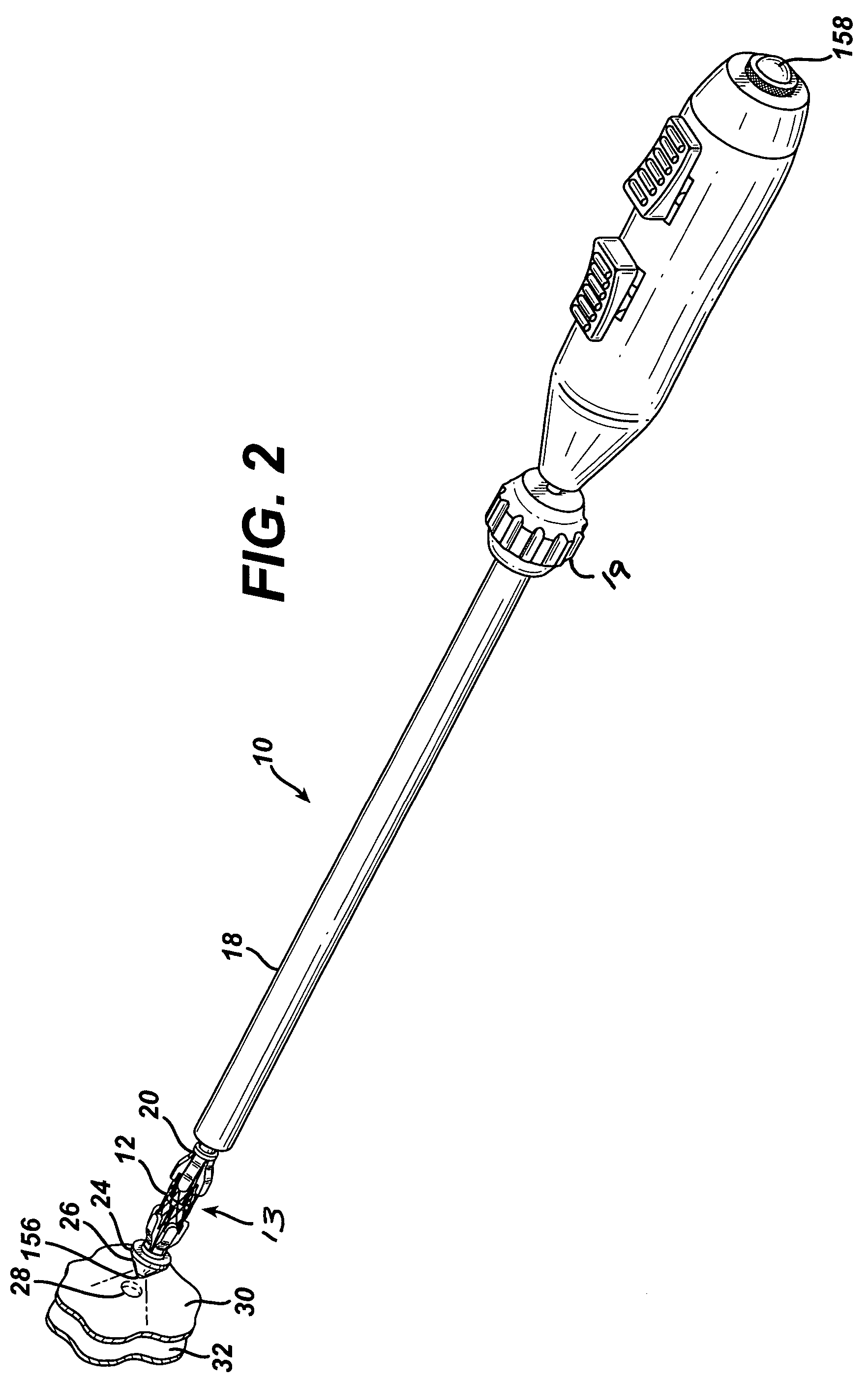Single lumen anastomosis applier for self-deploying fastener
a single-leaf anastomosis and fastener technology, applied in the field of surgery, can solve the problems of increasing the risk of heart disease, stroke, pulmonary disease, diabetes, etc., and numerous non-operative therapies for morbid obesity, which have virtually no permanent success, and failed to correct the condition
- Summary
- Abstract
- Description
- Claims
- Application Information
AI Technical Summary
Benefits of technology
Problems solved by technology
Method used
Image
Examples
Embodiment Construction
[0039]Turning to the Drawings, wherein like numerals denote like components throughout the several views, FIG. 1 depicts an applier 10 that advantageously laparoscopically or endoscopically deploys and actuates an anastomotic ring device 12 from a generally cylindrical shape to one having properties of a hollow rivet, or ring, capable of forming an astomotic attachment at an anastomosis target site, such as in a bariatric gastric bypass of a morbidly obese patient 16. In the illustrative version, the anastomotic ring device 12 comprises a shape memory effect (SME) material such as nitinol that further assists in actuation to an engaging hollow rivet shape.
[0040]It will be appreciated that the terms “proximal” and “distal” are used herein with reference to a clinician gripping a handle of the applier 10. It will be further appreciated that for convenience and clarity, spatial terms such as “right”, “left”, “vertical” and “horizontal” are used herein with respect to the drawings. Howe...
PUM
| Property | Measurement | Unit |
|---|---|---|
| size | aaaaa | aaaaa |
| compressive actuating force | aaaaa | aaaaa |
| shape | aaaaa | aaaaa |
Abstract
Description
Claims
Application Information
 Login to View More
Login to View More - R&D
- Intellectual Property
- Life Sciences
- Materials
- Tech Scout
- Unparalleled Data Quality
- Higher Quality Content
- 60% Fewer Hallucinations
Browse by: Latest US Patents, China's latest patents, Technical Efficacy Thesaurus, Application Domain, Technology Topic, Popular Technical Reports.
© 2025 PatSnap. All rights reserved.Legal|Privacy policy|Modern Slavery Act Transparency Statement|Sitemap|About US| Contact US: help@patsnap.com



